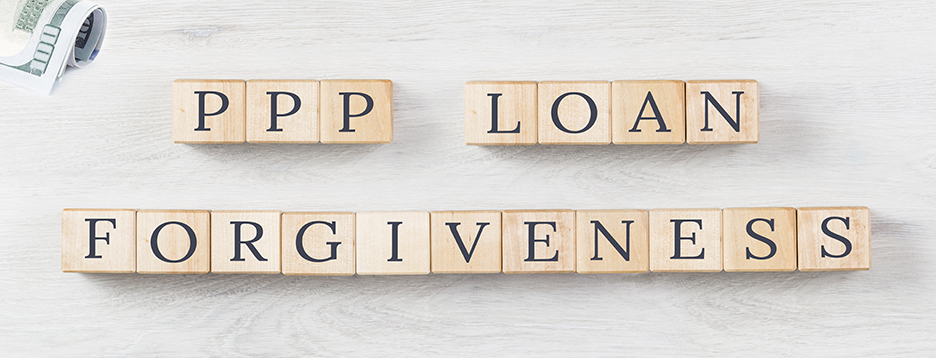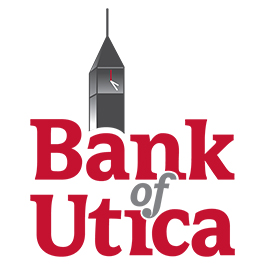
PPP Loan Forgiveness
How does the PPP loan forgiveness work?
Paycheck Protection Program (PPP) borrowers may be eligible for loan forgiveness if the funds were used for eligible payroll costs, payments on business mortgage interest payments, rent, or utilities during the covered period which can be any time between 8 and 24 weeks after disbursement.
A borrower can apply for forgiveness any time up to the maturity date of the loan. If borrowers do not apply for forgiveness within 10 months after the last day of the covered period, then PPP loan payments are no longer deferred and borrowers will begin making loan payments.
Note: The SBA is working on a simplified PPP forgiveness process allowing PPP loans of $150,000 or less to be forgiven after the borrower completes a one-page attestation (SBA must create this form within 24 days of enactment). We will post the newest form here when it is made available.
Other forms that can be used are: SBA Form 3508, SBA Form 3508EZ, or SBA Form 3508S. The 3508EZ and the 3508S are shortened versions of the application for borrowers who meet specific requirements. Read the instructions for each type of forgiveness application to be sure that you are filling out the correct one.
Instructions for Form 3508 can be found here and for Form 3508 here.
Instructions for Form 3508EZ can be found here and for Form 3508EZ here.
Instructions for Form 3508S can be found here and for Form 3508S here.
Forgivable Costs
The "Covered Period" over which a borrower may accumulate forgivable costs can now be any time between 8 weeks and 24 weeks. Note that any funds not used for qualifying purposes within that "Covered Period" are not eligible for forgiveness and must be paid back.
- Cash Compensation Payroll Costs includes the sum of gross salary, wages, tips, commissions, paid leave (vacation, parental, family, medical or sick leave, not including leave covered by the Families First Coronavirus Response Act), and allowances for dismissal or separation paid or incurred during the Covered Period or the Alternative Payroll Covered Period up to $100,000 of annualized pay.
Keep in mind:- Payroll costs must be at least 60% of the forgiven amount.
- Payroll costs are considered paid on the day that paychecks are distributed or the borrower originates an ACH credit transaction. Payroll costs are considered incurred on the day that the employee earned the pay. Payroll costs incurred but not paid during the borrower's last pay period of the Covered Period (or Alternative Payroll Cover Period) are eligible for forgiveness if paid on or before the next regular payroll.
- You can only include compensation of employees who were employed by you at any point during the Covered Period (or Alternative Covered Period).
- Non-Cash Compensation Payroll Costs (covered benefits): for employees (but not owners), the total amount paid for employee health insurance, including employer contributions to a self-insured, employer-sponsored group health plan, but excluding any contributions made by employees, the total amount paid for employer contributions to employee retirement plans, but excluding any contributions made by employees, and the total amount paid for employer state and local taxes assessed on employee compensation (e.g., state unemployment insurance tax), but not including any taxes withheld from employee earnings.
- Owner compensation: the SBA's guidance allows for the forgiveness of amounts paid to businesses that file Form 1040 Schedule C, Profit or Loss From Business (owner-employees, a self-employed individual or general partners):
- C-corporation owner-employees are capped by the amount of their 2019 (or 2020) employee cash compensation and employer retirement and health care contributions made on their behalf.
- S-corporation owner-employees are capped by the amount of their 2019 (or 2020) employee cash compensation and employer retirement contributions made on their behalf (but not health insurance contributions).
- General partners are capped by the amount of their 2019 (or 2020) net earnings from self-employment (reduced by claimed section 179 expense deduction, unreimbursed partnership expenses, and depletion from oil and gas properties) multiplied by 0.9235.
- For self-employed individuals (including Schedule C filers) and general partners, retirement and health insurance contributions are included in their net self-employment income and therefore cannot be separately added to their payroll calculation.
- Business mortgage interest payments paid or incurred during the Covered Period for any business mortgage obligation on real or personal property incurred before February 15, 2020 (do not include prepayments or payments of principal).
- Interest paid on loans for equipment, autos and other personal property items are includable and can be forgiven (e.g., auto loan interest on a car you own to make business deliveries).
- Business rent or lease payments paid or incurred for real or personal property during the Covered Period, pursuant to lease agreements in force before February 15, 2020.
- Business utility payments paid or incurred during the Covered Period, for which service began before February 15, 2020.
- The guidance defines "business utility payments" as electricity, gas, water, transportation, telephone, or internet access.
The SBA's guidance further provides that an eligible non-payroll cost must either be (1) paid or (2) incurred during the Covered Period and paid on or before the next regular billing date, even if the billing date is after the Covered Period.
Note: (1) that if your loan is forgiven, these expenses covered by the loan are not tax-deductible, see IRS Notice 2020-32 and (2) you must have claimed or be entitled to claim a deduction for such expenses on your 2019 Form 1040 Schedule C for them to be a permissible use during the Covered Period.
What Documentation Will Be Required?
Good recordkeeping and bookkeeping will be critical for getting your loan forgiven—you will need to keep track of eligible expenses and their accompanying documentation.
Payroll: Documentation verifying eligible cash compensation and non-cash benefits during the Covered Period or the Alternative Payroll Covered Period such as:- Bank account statements or third party payroll service provider reports,
- Tax forms or third party payroll service provider reports for the periods that overlap with the Covered Period:
- Payroll tax filings reported, or that will be reported, to the IRS (e.g., Form 941) and
- State quarterly business and individual employee wage reporting and unemployment insurance tax filings reported, or that will be reported, to the relevant state.
- Payment receipts, cancelled checks, or account statements documenting the amount of any employer contributions to employee health insurance and retirement plans that you included in the forgiveness amount (PPP Schedule A, lines (6) and (7)).
- Business mortgage interest payments: Copy of lender amortization schedule and receipts verifying payments, or lender account statements
- Business rent or lease payments: Copy of current lease agreement and receipts or cancelled checks verifying eligible payments
- Business utility payments: Copies of invoices and receipts, cancelled checks or account statements

